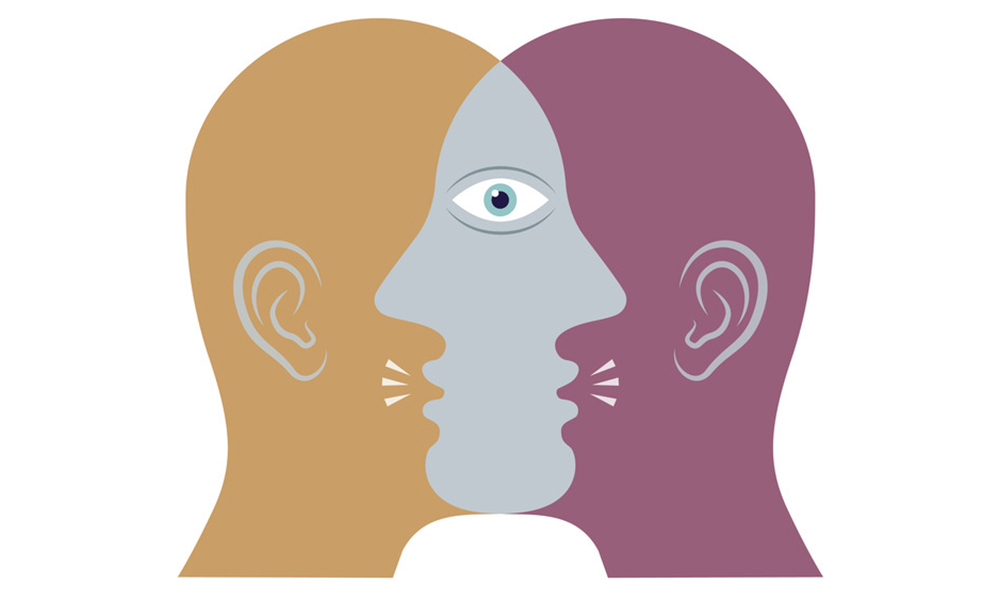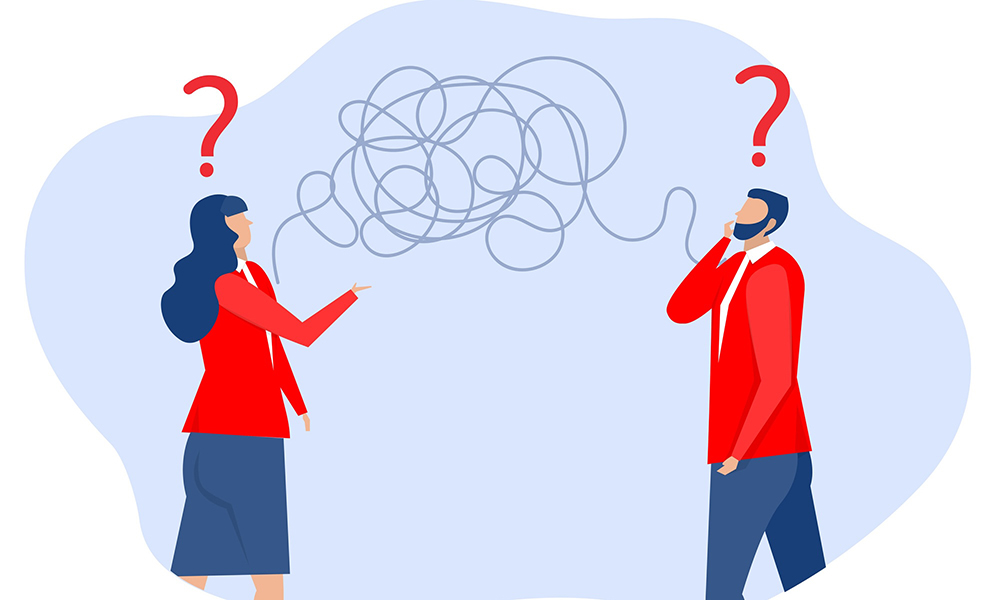Think about those times when in spite of your team members verbally agreeing to certain actions in a meeting, the implementation fell short of your expectations. Do you recall whether the facial expressions, the tone and the gestures of the team members matched their words? My guess is that your response would be “maybe” or “not sure”.
This is not atypical. Many of us tend to be relatively less aware of the nuances of body language and how sometimes what is unsaid can even be more important than spoken words.
Last week I had written to you about how language, if used in the right manner, can be a powerful tool to energise, empower and positively impact your teams. How, as leaders, you can never be too careful about the words you use, how you say it, whom you say it to and why you even say it, because the language that you use and the messages that it conveys are, by extension, that of our company.
But as deliberate as you may be about this, none of it will have the intended impact, unless you are able to match your body language with what you have to say. In fact, your facial expressions, gestures, the way you dress, how you stand, where you place your hands, the eye contact that you maintain, the pitch of your voice – are all at least equally, if not more important determinants of the message that you send across. Creative Director Deborah Bull puts it well, “Body language is a very powerful tool. We had body language before we had speech, and apparently 80 percent of what you understand in a conversation is read through the body, not the words”.
So, drawing from this, my message today focuses on the impact of our body language and non-verbal communication and how we can better manage it to become not just more effective communicators, but also more effective leaders.
Why is your body language so important?
As human beings, we are wired to sense and interpret non-verbal cues. Deeply instinctual and almost reflex driven, it is as old as civilisation itself. This is how our ancestors communicated. And not much has changed since then. Research today shows that that we are prone to making significant assumptions about each other within the first seven seconds of a meeting. That’s before a conversation even begins!
People are always on the lookout for non-verbal cues to understand what it is that your words are not conveying. If you think about it, you probably do just the same thing. Why is this so? Because your body language is directed by the emotional centre of your brain. So, it is, in a sense, a more ‘honest’ extension of how you feel. It is much tougher to fake it over a period of time. You won’t even be too sure of how much you are giving away. Selecting the right words on the other hand, can be much easier.
It should come as no surprise then, that as leaders, the non-verbal cues that we send out are constantly being read and evaluated, as markers of what we – and in turn our company – really mean. According to Carol Kinsey Goman in her Forbes article, 5 Body Language Secrets Every Leader Should Know, there are two sets of signals that people look for in leaders – status and authority, and warmth and empathy – and the most effective leaders employ the right signals at the right time.
Why managing your body language can be quite tricky
Your body language has a critical impact on your relationships with people. And while you may be quite good at reading other people, you probably have a way to go in understanding how you come across to them, which is only natural. So, you need to work at it. And the first thing you must acknowledge is that body language, by design, is rather tricky to master. Not just because of how you need to gauge and manage it, but also given the limited control that you have over its interpretation.
For starters, the entire focus here is not on what you think or feel or have planned to say. It is all about how you come across to the other person – how you are being interpreted. So, the best laid plans can fall apart. To add to that, much of the evaluation and interpretation of these cues takes place on a sub conscious level. More often that not, the person is not aware of what is triggering their opinion. So, if someone finds your arms crossed a sign of confrontation or the way you slouch in a chair, disinterest, chances are that you may not even realise it.
Being more aware of how some of the signals that you send across could be read, can be very helpful. It is your starting point to figuring out what you can do to influence it. Goman, in her Harvard Business Review article, 5 Mistakes People Make Reading Your Body Language, highlights some of the common assumptions that people make:
1. They won’t consider the context.
Unless you are conscious of the signals you could be sending out and make it a point to share the context – like why you had to wake up for an early call and so are yawning in a meeting – people will draw their own conclusions. And this can be very different when placed out of context. So, if you see this happening, stop and explain yourself.
2. They will find meaning in one gesture.
Not just that, people also tend to pay more attention to the negative than the positive.
3. They won’t know your baseline.
While you may be doing what comes naturally to you, for someone meeting you for the first time, the interpretation could be very different. So, it may be a good idea to get some feedback on this from people who have been around you for a while.
4. They will evaluate you through an array of personal biases.
People make connections and associations and look for resemblances. And this drives how they feel about other people. This can be either good for you, or bad. And there isn’t any real way to predict that.
5. They will evaluate through a filter of cultural biases.
People watching you are making judgments based on the cultural contexts that they come from. If these are different from yours, then they stand a higher chance of being misinterpreted without you being aware of it.
Here are ten guidelines on how you could go about introspecting on and refining your body language:
1. This is not something that you can turn on and off.
Your body language needs to be a part of who you are and how you communicate. It needs to come naturally to you. Don’t look to fake this.
2. Making eye contact is a must.
When you speak to people, look them in the eye. It shows that you are interested. Fidgeting and looking away, even if you are shy or nervous, points to disinterest or a lack of trust.
3. Use gestures to add to your message.
Don’t gesticulate without reason. It can be distracting and opens up more to be interpreted. This is where rehearsing in front of a mirror before you deliver a message for example, can be helpful.
4. Mirror the other person.
Observe the people you are communicating with and try and use similar cues to what they are using. The purpose of this imitation of sorts is really to signify that you associate closely with them.
5. Watch your hands.
When you have your palms open, facing upwards, it indicates that you are open to and welcoming conversation. Having your palms facing downwards, placed on a table for example, is a sign of assertiveness, for when you want to make a much stronger message.
6. Be more open.
If you are setting up for a discussion, you need to make your gestures more open. This can be in the way you use your arms for example – if you cross them, that makes you defensive. You can also adopt a more open pose in how you stand – so don’t be hunched, with your feet firmly together. Standing too close to the person could indicate that you don’t quite respect their personal space. Nodding from time to time to show interest and agreement, can be helpful.
7. Smile genuinely.
Now usually, you would think that the right thing to do is to smile much more. But that isn’t always so. It is much more important that when you smile, there is warmth and genuineness in it, than you just forcing yourself to grin throughout a conversation. And make it a point not to frown.
8. Face the person.
Your body needs to be facing the person directly, otherwise it seems like you aren’t interested or uncomfortable with the conversation. Lean in, to show that you are involved.
9. Modulate your voice.
Do this in line with the kind of conversation you are having and the manner in which the other person is responding. Being too loud or brash can make people shy away from you. Talking too fast could mean that you are in a hurry to get this over with. Your tone and pace goes a long way in helping people understand your messaging; so be particular about this.
10. Don’t fidget.
Drumming your fingers, constantly shifting in your chair or worse of all having your head down into your phone in a meeting makes the other participants feel that you don’t really care what they are saying.
Do spend some time thinking about the kind of non-verbal signals that you are sending across as a leader. How is this making your teams and colleagues feel and react? What can you do to better harness the power of body language? And when you get a chance, watch this interesting TED video by social psychologist, Amy Cuddy – Your body language shapes who you are (http://ed.ted.com/lessons/your-body-language-shapes-who-you-are-amy-cuddy).








If body language conveys 80% it’s critical. ‘Fake it till you make it’ is what I read somewhere… as the ‘super-confident’ look may not be a natural one for many of us. Thanks.